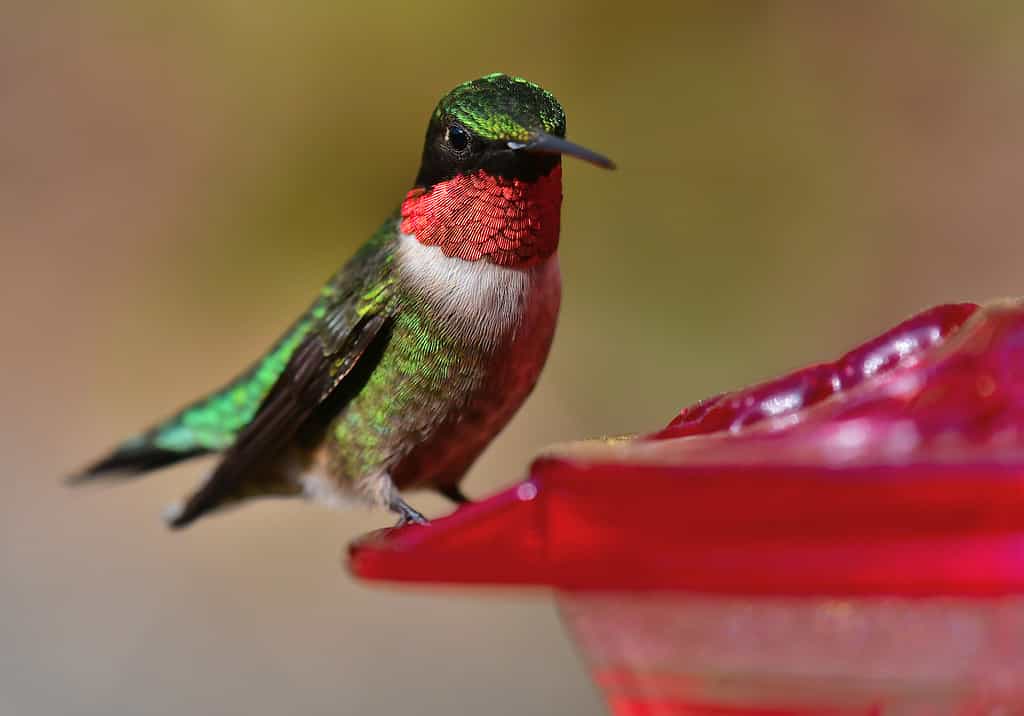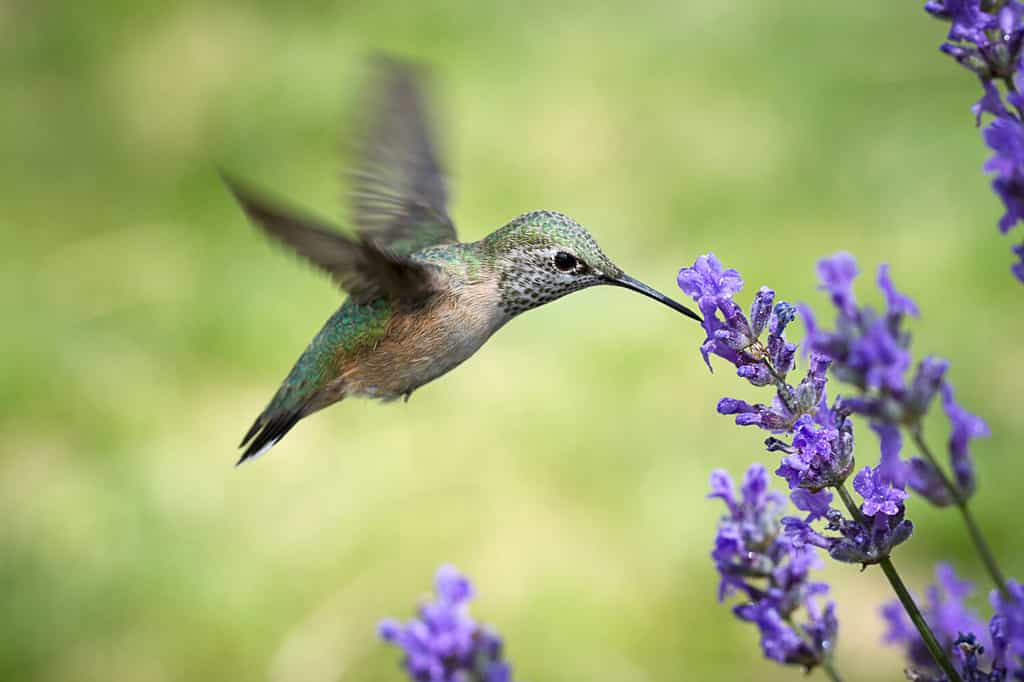Many of us know hummingbirds for their unique appearance, impressive flight, and incredible migrations. However, people very rarely talk about the sounds that these birds make. Unlike some other avians, hummingbirds typically have smaller voices. They aren’t boisterous singers, and their chirps often go overlooked. When these birds do vocalize, it’s for specific purposes. Let’s explore a few reasons why hummingbirds chirp so that individuals can determine what these birds are trying to communicate.
Why Do Hummingbirds Chirp?

On average, hummingbirds live to be between three and five years old.
©Robert Winkler/iStock via Getty Images
Like many birds, hummingbirds use their voice to convey a variety of messages. One of the most common reasons why these birds vocalize is to attract mates. Males will let out chirps in order to alert females in the area that he is nearby. If interested, a female will follow the sound to the male in question. At this point, the male will continue to chirp and dance in an attempt to impress her. If she’s willing, she may chirp back a bit to signal her willingness. After this, mating will occur and the male will try to repeat the process with another female.
On the other hand, a male can also chirp to deter other males in the area. If two male hummingbirds encounter one another, they will let out three high-pitched vocalizations as a warning. Males will defend areas that are known to have female hummingbirds present or areas with access to ample food sources. However, some hummingbirds chirp to one another as a way of communicating. Sometimes a chirp simply means “Hi, I’m here!” And nothing more.
Do Hummingbirds Make Any Other Sounds?

Many bird watchers use the noises that hummingbirds make in order to identify them.
©Gregory Johnston/Shutterstock.com
In addition to chirping, some hummingbirds are able to make noise using their tail feathers. Among these are Anna’s hummingbird, the broad-tailed hummingbird, the Rufous hummingbird, and Costa’s hummingbird. According to the National Audubon Society, “Broad-tailed Hummingbirds make a racket even before they start diving. As the hummingbirds pump their wings through the air, the tips of their outermost wing feathers vibrate to make a cricket-like sound, Clark says.” However, not every hummingbird sounds the same. The sound their tail feathers make will vary from species to species. Interestingly, the sound that calliope hummingbirds make with their tails has been compared to passing gas!
Final Thoughts
Hummingbirds are complex creatures that vocalize for a number of different reasons. In order to discern which intention these birds have, it’s important to read the situation at hand. If you’re unable to tell, it might just be a joyful noise and nothing more. Not every chirp is high stakes, and many hummingbirds have been observed chirping happily while simply flying from flower to flower. Keep this in mind next time you hear one nearby!
The photo featured at the top of this post is © Devonyu /Shutterstock.com
Thank you for reading! Have some feedback for us? Contact the AZ Animals editorial team.






